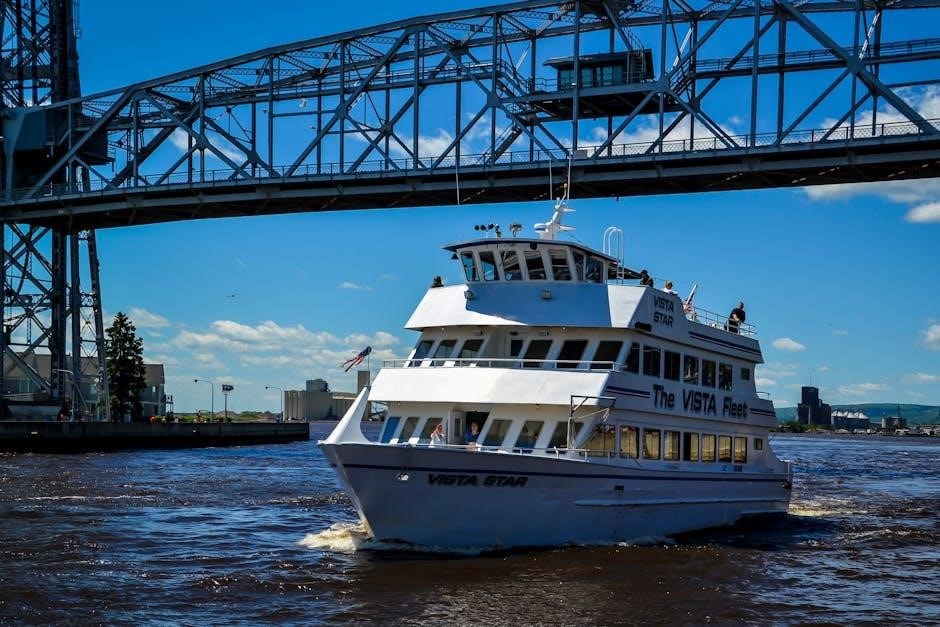Boat lift guides provide support and protection for boats, making them a crucial component of boat lift systems, ensuring safe and secure boat storage and maintenance, every single day always.
Importance of Boat Lifts
Boat lifts play a vital role in protecting boats from damage and deterioration, and their importance cannot be overstated. By elevating the boat out of the water, boat lifts prevent corrosion and reduce the risk of hull damage from waves and storms. Additionally, boat lifts make it easier to perform maintenance tasks, such as cleaning and repairs, which can help extend the life of the boat. A well-designed and properly installed boat lift can also increase the value of a property, making it a worthwhile investment for boat owners. Furthermore, boat lifts can help to reduce the risk of accidents and injuries, by providing a safe and stable platform for boarding and exiting the boat. Overall, the importance of boat lifts lies in their ability to provide a safe, convenient, and cost-effective way to store and maintain boats. This is essential for boat owners.
Choosing the Right Location
Choosing the right location for a boat lift is crucial to ensure safe and efficient operation. The location should provide adequate water depth and clearance for the boat to float in and out of the lift. It is also important to consider the proximity to the shore and the dock, as well as the direction of the sun and wind. A location with calm waters and minimal wave action is ideal, as it will reduce the stress on the lift and the boat. Additionally, the location should be accessible for maintenance and repairs, and have a stable and level foundation to support the weight of the boat and the lift. By carefully selecting the right location, boat owners can ensure a safe and enjoyable boating experience, and prolong the life of their boat and lift, which is essential for a good investment. Proper planning is necessary.

Steps for Boat Lift Installation
Installation requires careful planning and execution, following specific steps and guidelines, ensuring a safe and secure process, every time, always, with proper tools and equipment available.
Pre-Installation Considerations
Before installing a boat lift, it is essential to consider several factors, including the size and weight of the boat, the type of dock or seawall, and the water conditions. The location of the lift should be carefully chosen to ensure safe and easy access to the boat. The dock or seawall should be sturdy enough to support the weight of the boat and the lift. It is also important to consider the type of boat lift that is best suited for the specific needs of the boat and the dock. Additionally, it is crucial to follow the manufacturer’s instructions and guidelines for installation to ensure a safe and successful process. By taking the time to consider these factors, boat owners can ensure that their lift is installed correctly and functions properly, providing years of reliable service and protection for their boat. Proper planning is key.
Guide Posts and Cradle System
The guide posts and cradle system are critical components of a boat lift, working together to securely support the boat. The guide posts are typically a 3-piece design, consisting of a bracket, post, and PVC cover, which provide a snug fit against the boat’s rub-rail. The cradle system is designed to cradle the boat, providing a safe and stable platform for lifting and lowering. The guide posts help to guide the cradle system into place, ensuring proper alignment and secure support for the boat. The design of the guide posts and cradle system allows for easy installation and adjustment, making it simple to customize the fit for a specific boat. By providing a secure and stable support system, the guide posts and cradle system help to protect the boat from damage and ensure safe and reliable operation of the lift. This system is essential for boat lift functionality.

Boat Lift Maintenance
Regular maintenance is necessary for optimal boat lift performance and longevity always ensuring safety and functionality every day.
Following Manufacturer Recommendations
It is essential to follow the manufacturer’s recommendations for boat lift maintenance to ensure optimal performance and longevity. The manufacturer’s manual provides a maintenance checklist that outlines the specific tasks to be performed at regular intervals. By following these recommendations, boat owners can help prevent damage to their boat lift and ensure safe and reliable operation. Regular maintenance tasks may include inspecting the lift’s electrical and mechanical components, lubricating moving parts, and checking for signs of wear and tear. Additionally, the manufacturer may recommend specific maintenance procedures for different environmental conditions, such as saltwater or extreme temperatures. By following the manufacturer’s recommendations, boat owners can help extend the life of their boat lift and prevent costly repairs. This is crucial for ensuring the overall safety and functionality of the boat lift. Proper maintenance is key to a well-functioning boat lift.
General Maintenance Tips
Regular inspection of the boat lift’s components is crucial for identifying potential issues before they become major problems. Checking the lift’s cables, pulleys, and other moving parts for signs of wear and tear can help prevent accidents and ensure safe operation. Additionally, keeping the lift’s electrical components clean and dry can help prevent corrosion and electrical faults. It is also important to check the lift’s foundation and ensure that it is stable and secure. By performing these general maintenance tasks, boat owners can help extend the life of their boat lift and prevent costly repairs. A well-maintained boat lift can provide years of reliable service, and regular maintenance can help identify potential issues before they become major problems. Proper maintenance can also help prevent accidents and ensure safe operation of the boat lift, which is essential for protecting the boat and its occupants. Regular maintenance is essential.

Boat Lift Removal and Storage
Proper removal and storage of boat lifts require careful planning and execution always safely.
Best Practices for Removal
When removing a boat lift, it is essential to follow best practices to ensure safety and prevent damage to the lift and surrounding structures.
A thorough inspection of the lift and its components should be conducted before removal to identify any potential issues.
The removal process should be carefully planned and executed, taking into account the weight and size of the lift, as well as any environmental factors that may affect the process.
It is also crucial to have a sufficient number of people to assist with the removal, as boat lifts can be heavy and difficult to maneuver.
Additionally, all necessary tools and equipment should be available and in good working condition to facilitate a smooth and safe removal process.
By following these best practices, boat owners can ensure a successful and incident-free removal of their boat lift. Proper removal techniques are vital for safety.
Importance of Regular Maintenance

Regular maintenance is crucial for extending the lifespan of a boat lift and ensuring its continued functionality.
A well-maintained boat lift provides a safe and secure environment for boat storage and maintenance, reducing the risk of accidents and damage.
Neglecting regular maintenance can lead to costly repairs and even complete system failure, resulting in significant financial losses.
Regular maintenance also helps to prevent corrosion and wear on moving parts, ensuring smooth operation and minimizing downtime.
By prioritizing regular maintenance, boat owners can enjoy peace of mind and protect their investment in the boat lift and their vessel.
Proper maintenance involves inspecting and replacing worn components, lubricating moving parts, and performing other tasks as recommended by the manufacturer.
This helps to prevent problems and ensures the boat lift continues to function as intended, providing years of reliable service and support. Regular maintenance is essential for boat lift longevity.
